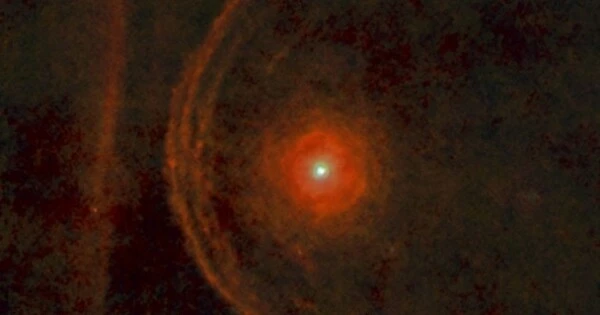There are millions of rogue space rocks in our solar system, and this week three especially large ones will fly by Earth. Don’t fret, though; NASA estimates that the closest one will still miss Earth by a comfortable 2.2 million miles (3.5 million kilometers), or about 10 times the typical distance between Earth and the moon.
Asteroid 2012 DK31 will pass our globe on February 27 at a distance of about 3 million miles (4.8 million km). The asteroid crosses Earth’s orbit every few years and is believed to be 450 feet (137 meters) across, or roughly the width of a 40-story skyscraper.
The space rock is classified by NASA as a potentially hazardous asteroid (PHA), which means that even though it doesn’t currently represent a threat to Earth, a shift in its trajectory and a collision with it could result in significant damage. A PHA is typically defined as any asteroid wider than 450 feet and circling within 4.6 million miles (7.5 million km) of Earth. The trajectory of this asteroid has been plotted by NASA for the subsequent 200 years, and no collisions are anticipated.
A second PHA the height of a skyscraper will cross our planet’s orbit on Tuesday (Feb. 28) at a distance of approximately 2.2 million miles (3.5 million km). Every four to five years, a large space rock known as 2006 BE55 passes Earth’s orbit.
Last but not least, on Friday, March 3, an approximately 250-foot-wide (76-meter-wide) asteroid will pass by at a distance of 3.3 million miles (5.3 million km). The rock, known as 2021 QW, occasionally comes near to Earth but is not quite wide enough to be considered a PHA.
Why do scientists care so much about space rocks that will fly millions of kilometers past our planet? Because even minor modifications to an asteroid’s trajectory, such as those caused by being pushed by another asteroid or affected by a planet’s gravity, could propel nearby objects like these directly toward Earth.
NASA’s calculations, fortunately, indicate that no known asteroids are presently on a path to strike Earth for at least 100 years. Astronomers are already developing strategies to prevent a large asteroid from ever directly threatening our world. In order to change an asteroid’s orbital speed, NASA’s Double Asteroid Redirection Test (DART) mission purposefully crashed a missile into an asteroid. Although the mission’s objective wasn’t completely destroyed, it did demonstrate that a space rock’s orbit can be significantly altered by direct rocket attacks.
















